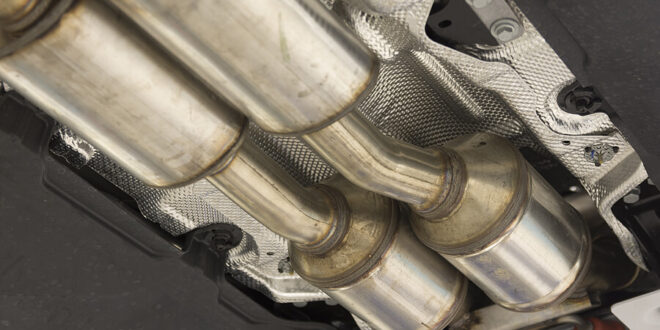As an observant vehicle owner, you know when your vehicle is operating at or near peak performance. There are no unusual sounds or smells, no hard starts or stalling episodes and no annoying lights flashing at you from the dashboard. In fact, driving your vehicle down the road is pure pleasure. On the other hand, when something is amiss, your car or truck will let you know one way or another. This is definitely the case with failing catalytic converters. One noticeable sign is the smell of sulfur or rotten eggs rising from the exhaust system into your nostrils. While you might be able to ignore this for a little while, if it gets worse it is a solid sign that your unit is clogged. Generally, this happens when your converter is ten years old or more. The next likely sign is reduced engine performance.
How To Tell Your Catalytic Converter Has Gone Bad
The check engine light typically comes on when the converter is not functioning properly. For the ultimate verification that it is the converter causing the problems and not some other component, your mechanic can perform diagnostic testing. While it is possible to drive your vehicle in the early stages of converter failure, eventually things go downhill. At some point, you cross a line; the consequences become potentially more severe. Later signs of failure include the presence of dark exhaust smoke, reduced gas mileage and excessive heat coming from under the vehicle. If you continue to push the limits, you could see catastrophic impacts to your car:
Engine damage
Engine failure
A car fire
A car breakdown
A new catalytic converter cost can run anywhere from $1,000 to $2,500, depending upon labor costs and the type of unit purchased. Once a new catalytic converter is installed, you reap some impressive benefits: better performance and the elimination of unpleasant smells for starters. You also get peace of mind knowing that your car isn’t about to ignite into flames as you drive down the road. Just as importantly, you are contributing to cleaner air for everyone.
How To Fix a Catalytic Converter
Satisfactory fixes to a failing unit are limited. Using fuel additives, driving at highway speeds and manual cleaning could buy you some extra time. In most cases, though, replacement is your best option. A new catalytic converter is a precision instrument. Through a complicated system of heat and chemical reactions, it takes harmful gasses from engine combustion and strips away their harmful effects. Once you have decided on replacing your converter, it is important to get the right part for your make, model and year vehicle. A VIN decoder is a great free tool to make sure you always get the correct part. Your Vehicle Identification Number infallibly identifies your machine. Each number in the 17-digit code provides information about the vehicle. It is one of the best ways to get a precise match an any new parts you order. Once you have located your VIN on your title or your insurance information, you are ready to shop for quality parts that will last.
 HammBurg Be informed with latest news, reviews, entertainment, lifestyle tips, and much more.
HammBurg Be informed with latest news, reviews, entertainment, lifestyle tips, and much more.




